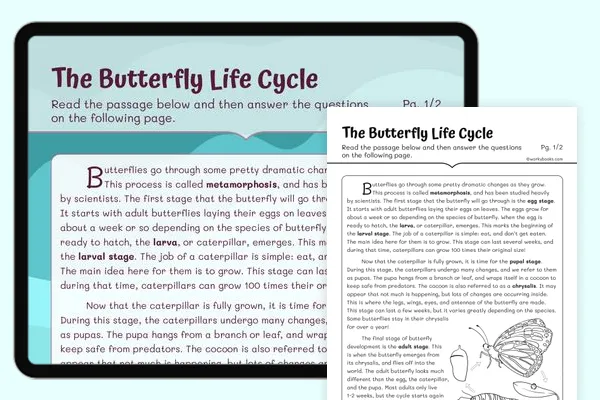Different Types of Turtles — Reading Comprehension
Grades
- 1
- 2
- 3
Standards
- RI.2.1
- RI.3.1
PRINT+DIGITAL RESOURCE
This learning resource is available in interactive and printable formats. The interactive worksheet can be played online and assigned to students. The Printable PDF version can be downloaded and printed for completion by hand.
About This Reader
The world of turtles is incredibly diverse, with over 350 species showcasing a wide array of shapes, sizes, and adaptations. Box turtles, known for their hinged plastron that allows them to completely enclose themselves for protection, are a common sight in many parts of North America. Snapping turtles, with their powerful jaws and aggressive demeanor, are formidable predators in freshwater habitats. Sea turtles, such as the endangered Kemp's ridley and the majestic leatherback, have streamlined bodies perfect for oceanic life. Painted turtles brighten up ponds and lakes with their vibrant shell patterns, while softshell turtles intrigue with their leathery carapaces. The Galápagos giant tortoise stands out as one of the largest land turtles, capable of living over a century. Each turtle species has evolved unique features to suit its specific environment and lifestyle. From the small musk turtle to the massive alligator snapping turtle, the variety in turtle species reflects millions of years of evolutionary adaptation to diverse ecological niches
Perfect For:
👩🏫 Teachers
- • Reading comprehension practice
- • Auto-graded assessments
- • Literacy skill development
👨👩👧👦 Parents
- • Reading practice at home
- • Comprehension improvement
- • Educational reading time
🏠 Homeschoolers
- • Reading curriculum support
- • Independent reading practice
- • Progress monitoring
Reading Features:
📖
Reading Passage
Engaging fiction or nonfiction text
❓
Comprehension Quiz
Auto-graded questions
📊
Instant Feedback
Immediate results and scoring
📄
Printable Version
Download for offline reading
🔊
Read Aloud
Voice-over with word highlighting






















